Hinamatsuri (also known as Doll’s Day or Girls’ Day) is an annual festival in Japan that celebrates the health and happiness of young girls. On this special day, we decorate with hina dolls and enjoy festive foods such as chirashi sushi, clam soup, and strawberry daifuku.

Every year on March 3rd in Japan, we celebrate Hinamatsuri (雛祭り) to wish and pray for the health and well-being of all young girls. Unlike Children’s Day, observed on May 5, Hinamatsuri is not an official holiday, but it is widely celebrated in Japan. In fact, the festival is a unique and joyous occasion that Japanese girls eagerly anticipate.
Table of Contents
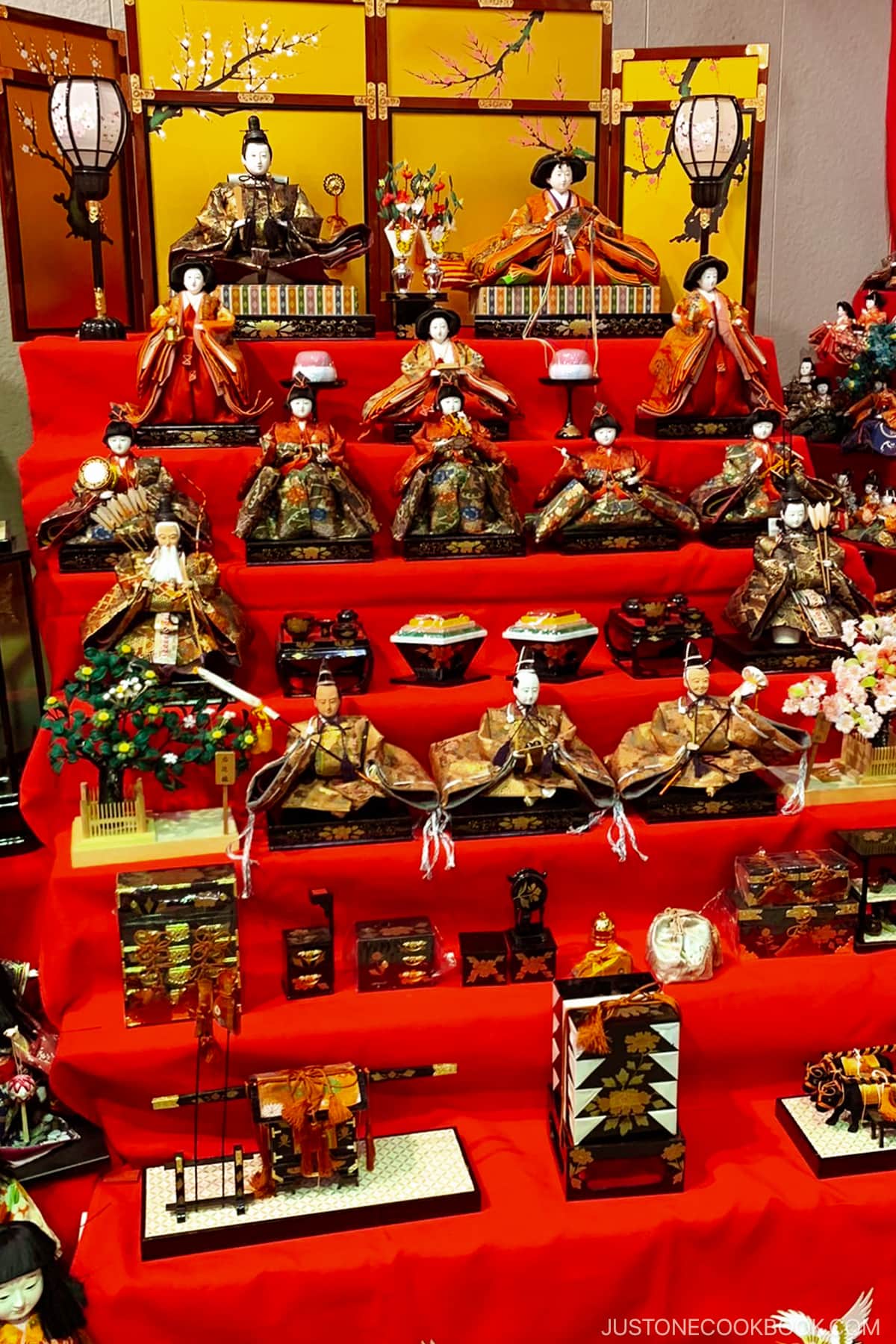
What is Hinamatsuri?
Hinamatsuri (雛祭り) is also known as the Doll Festival or Girls’ Day. ‘Hina‘ refers to the special dolls for the occasion, and ‘matsuri‘ is the Japanese word for a festival or holiday. On this day, families and communities come together to commemorate girls and their femininity.
Traditionally, Hinamatsuri was known as Momo no Sekku (桃の節句) or ‘the peach festival’ as it took place after winter when the peach trees in Japan began to flower.
The custom of Hinamatsuri is one of Japan’s five sekku, or seasonal festivals. These sekku festivals are celebrated on the first day of the first month (1/1), the third day of the third month (3/3), the fifth day of the fifth month (5/5), and so on. As the third sekku festival, Hinamatsuri is observed on March 3rd.
As it also signals the arrival of spring, you’ll notice spring-themed colors like pink, green, and white used in decorations at homes, store windows, or classrooms.
In case you’re wondering, we have another occasion known as Children’s Day that celebrates boys and children in general that is held on May 5th.
How We Celebrate Hinamatsuri
On this special occasion, Japanese families with young daughters display their special hina dolls or hina ningyo (雛人形) on red-cloth-covered platforms. When a baby girl is born, her parents or grandparents may buy a set of hina ningyo, or they may pass down their own set to the girl.
The image below shows a grander display where the dolls are dressed in traditional costumes laid out hierarchically on a red terraced stand. These dolls are said to represent the emperor, empress, attendants, and musicians of the Heian period, and are used to pray for health, prosperity, and traditionally, a good marriage which was the hallmark of a good life.
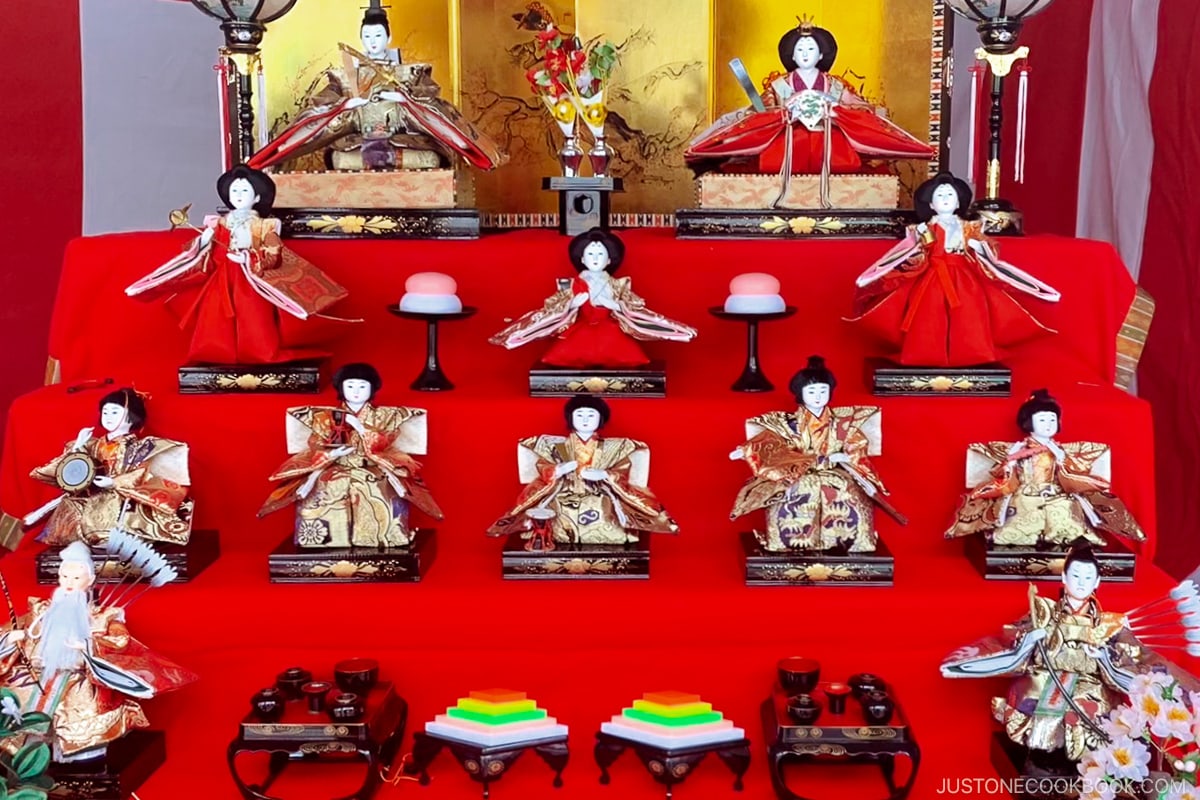
The miniature hina ningyo in the picture below was gifted to me by my friend from Osaka a long time ago. I look forward to decorating this ornament every year as a symbolic gesture to dedicate the day to my daughter.
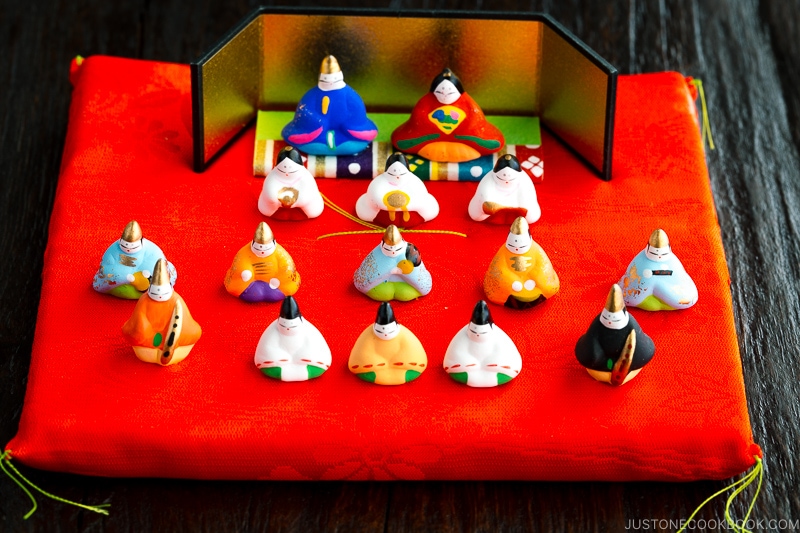
The Origin of Hinamatsuri
Hinamatsuri is believed to have its roots in the ancient Chinese custom of warding off evil spirits by transferring the sins of the body and any misfortunes to dolls and releasing them into the rivers. This practice served as a form of purification, and families with girls would create hina ningyo (雛人形), or hina dolls, out of straw and take them down to the river on boats, supposedly freeing all potential bad luck and troubles.
In some rural areas of Japan, you can still find this custom, called hina-okuri or nagashi-bina, being carried out, with people floating paper dolls down the rivers.
Traditional and Festive Foods for Hinamatsuri
In addition to the doll display, the Japanese also celebrate Girl’s Day by eating special foods. Since it’s springtime in Japan, you’ll find many dishes and sweets with spring and pink color themes being enjoyed on this day. If you have a daughter(s) and are planning to prepare a special meal to celebrate this holiday, here are some recipes you could consider for the festivity.
1. Chirashi Sushi
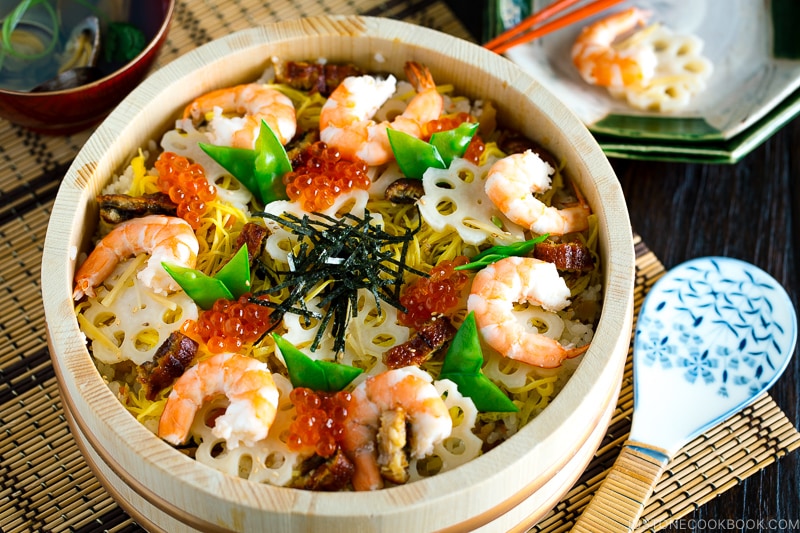
The Japanese typically eat Chirashi Sushi on Girls’ Day. It’s colorful and pretty, perfect for girls! I also have a quick recipe with premade Chirashi Sushi Mix, which is widely available in Japanese/Asian grocery stores.”
2. Temari Sushi
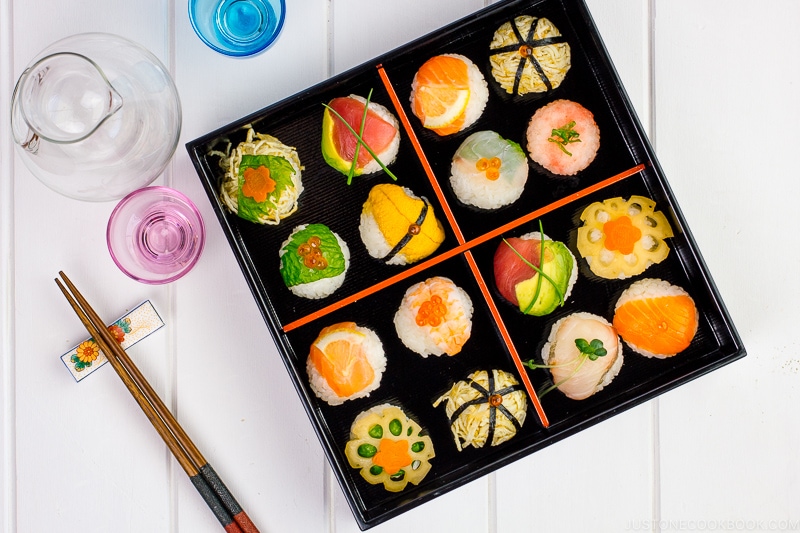
These colorful and beautiful sushi balls are called Temari Sushi, perfect for celebrating Girls’ Day! Setting up a DIY Temari Sushi Party for your children or girls would be a fun idea!
3. Mosaic Sushi
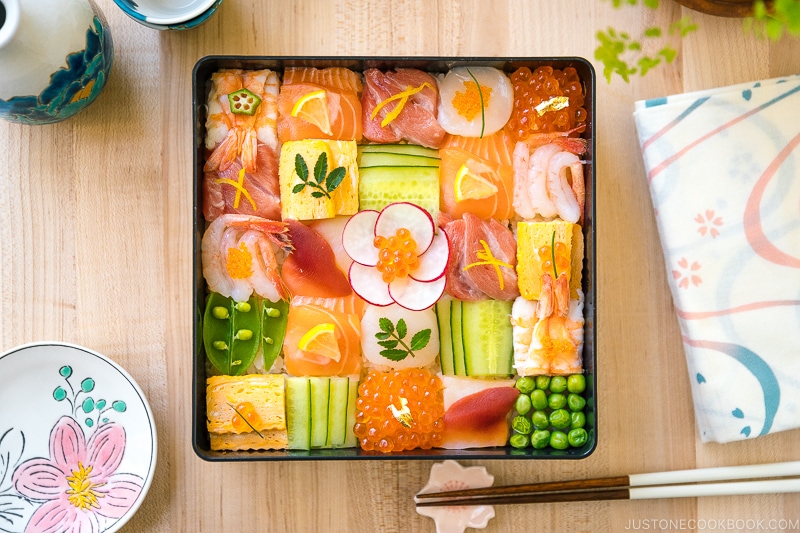
This colorful Mosaic Sushi features sashimi, tamagoyaki rolled omelette, and vegetables arranged in a checkerboard pattern over sushi rice. It’s a feast for the senses! Despite its exquisite presentation, it can be made at home by anyone.
4. Chirashi Sushi Cake & Chakin Sushi
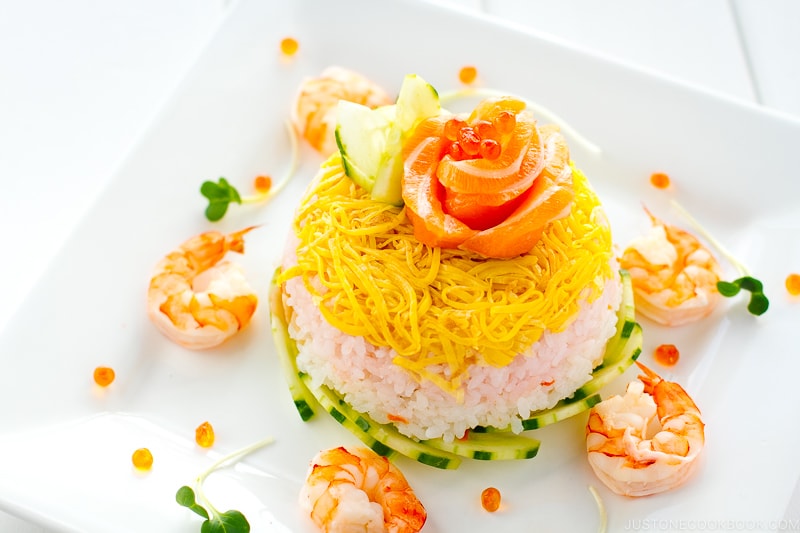
Layered like a flower petal, this Chirashi Sushi Cake will be the centerpiece of the menu. It might look difficult to make, but trust me, it’s really easy!
5. Inari Sushi
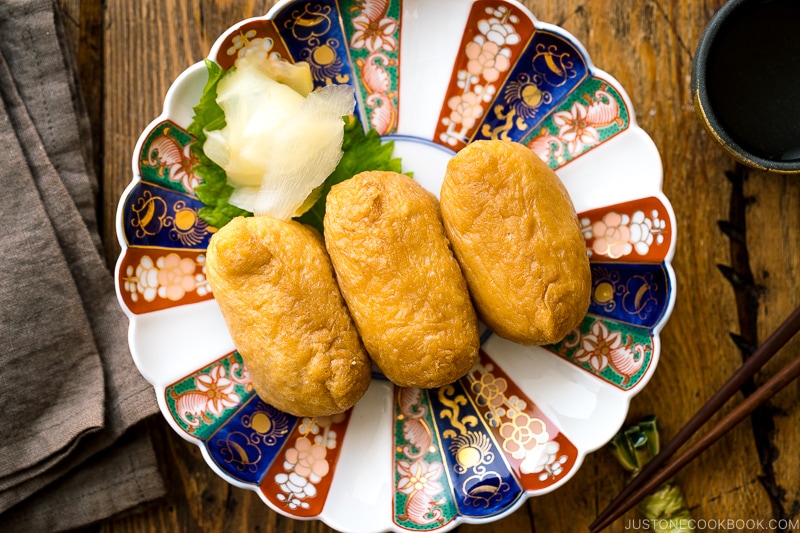
For finger food, Inari Sushi is a popular dish to serve at the Girl’s Day celebration. My recipe is slightly different from the traditional method, but you’ll enjoy making these rice-stuffed tofu pockets sushi.
6. Clam Clear Soup (Ushiojiru)
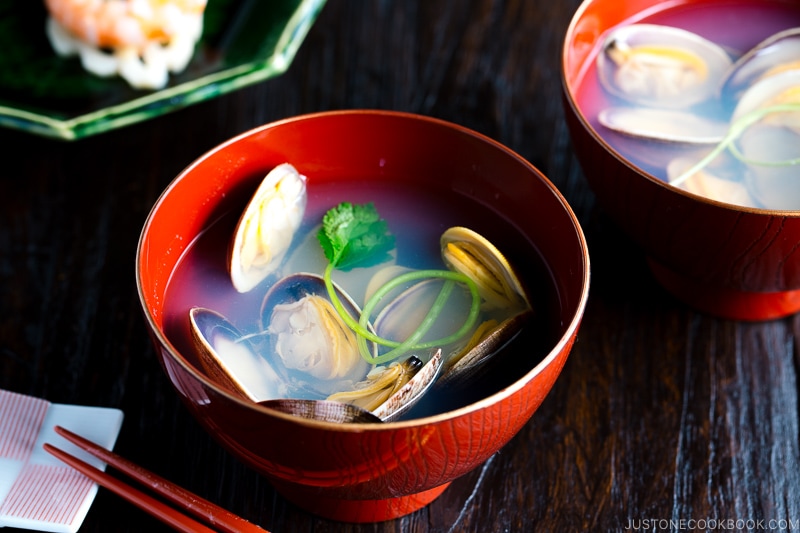
Ushio-jiru is a clear soup made with seafood such as white fish or clams and seasoned with only salt and sake. Clear Clam Soup is the most popular soup to go with chirashi sushi. I have a Clam Soup recipe that incorporates miso flavor.
7. Futomaki
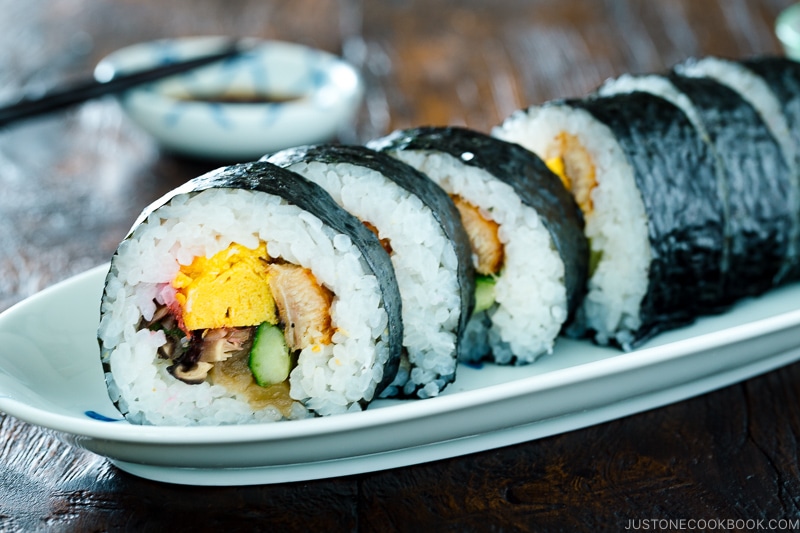
Futomaki is a traditional thick sushi roll typically filled with vegetables and sometimes includes cooked fish. As you can prepare festive-looking sushi ahead of time, it makes a great dish to celebrate events like Hinamatsuri.
8. Cherry Blossom Rice Balls
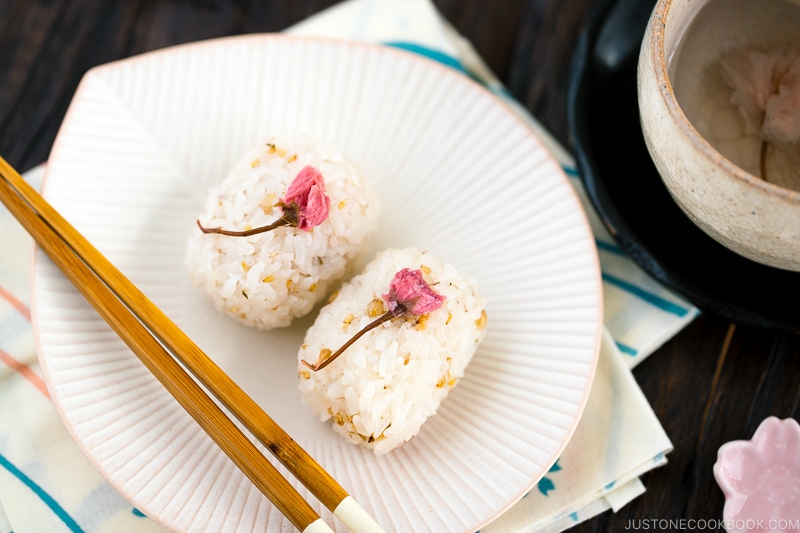
Your daughter(s) and friends would be very excited if you make these Cherry Blossom Rice Balls (桜のおにぎり) for them. Adorned with beautiful pink blossoms, they make the occasion extra special. If the girls are into cooking, why not get their help in making the rice balls too? You can buy the salt-pickled cherry blossoms from this online store that ships internationally!
9. Sakura Mochi
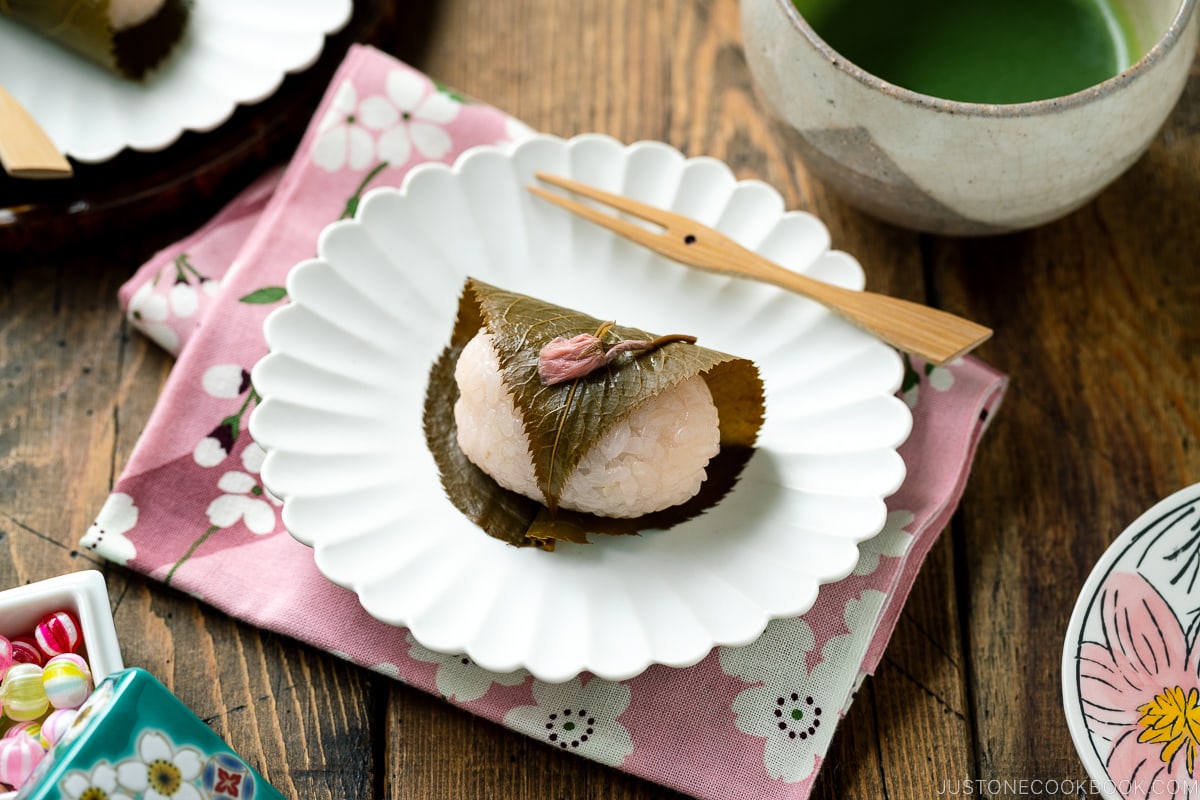
For desserts, you can enjoy spring-themed sweets such as Sakura Mochi. The salt-pickled cherry leaf gives a nice contrast to the sweet red bean mochi.
10. Strawberry Daifuku Mochi
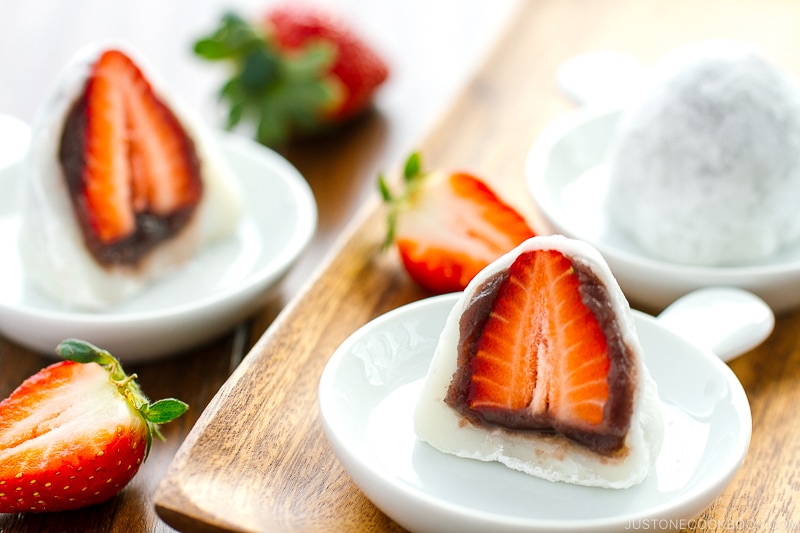
Another popular dessert is Strawberry Daifuku. Tangy and sweet strawberry wrapped with sweet red bean paste and soft and chewy mochi. Japanese strawberries are in season during spring, so this spring-themed dessert is perfect for Girl’s Day!
11. Hanami Dango
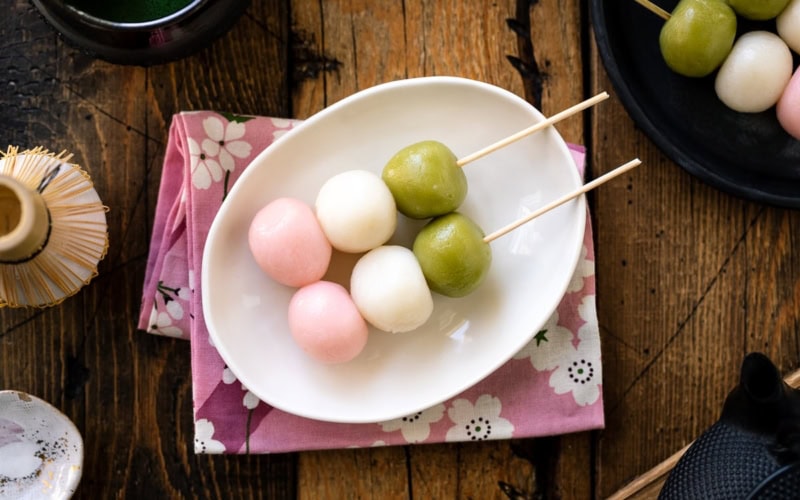
Hanami Dango is enjoyed during cherry blossom viewing, and these three-color rice balls (sanshoku dango) are a popular treat in spring!
12. Mitarashi Dango
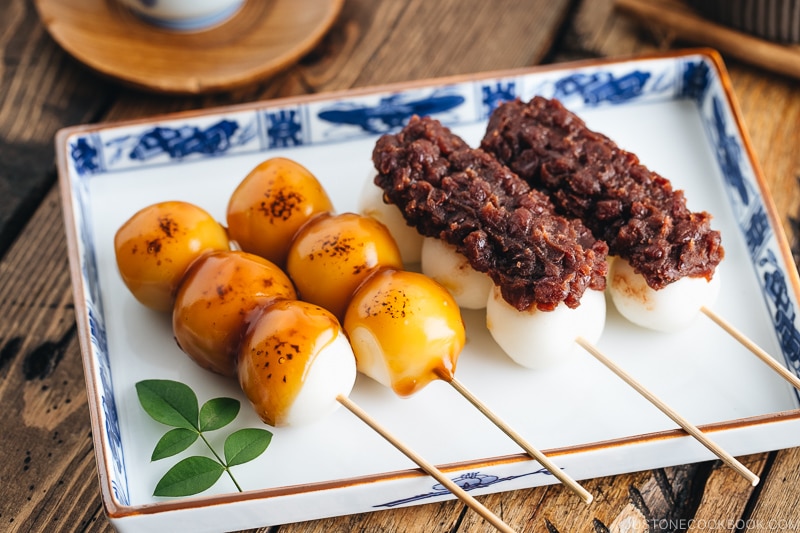
Classic Mitarashi Dango is much easier to make compared to sanshoku dango. Enjoy the savory-sweet glaze on top of chewy dango mochi!
13. Cherry Blossom Cookies
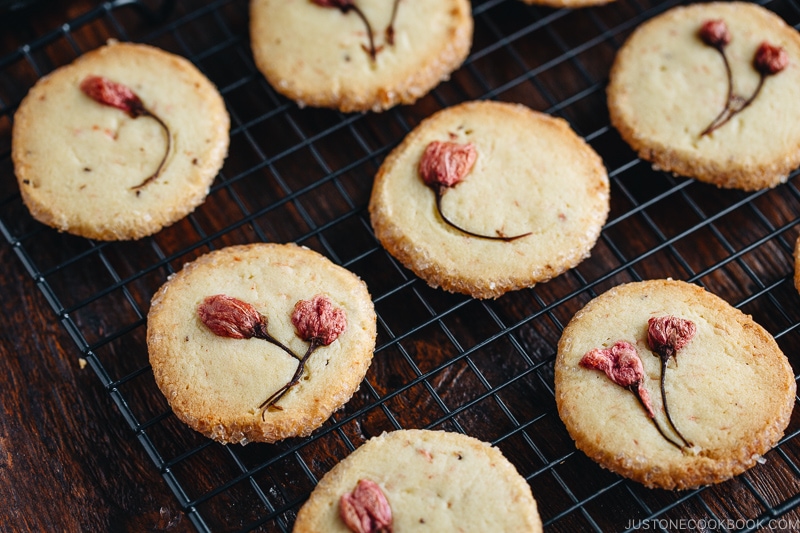
Made with butter, sugar, flour, and salt-pickled cherry blossoms, these Cherry Blossom Cookies are crispy, buttery and so pretty. You can smell and taste the cherry blossoms, which is the highlight of these cookies.
14. Japanese Strawberry Cake
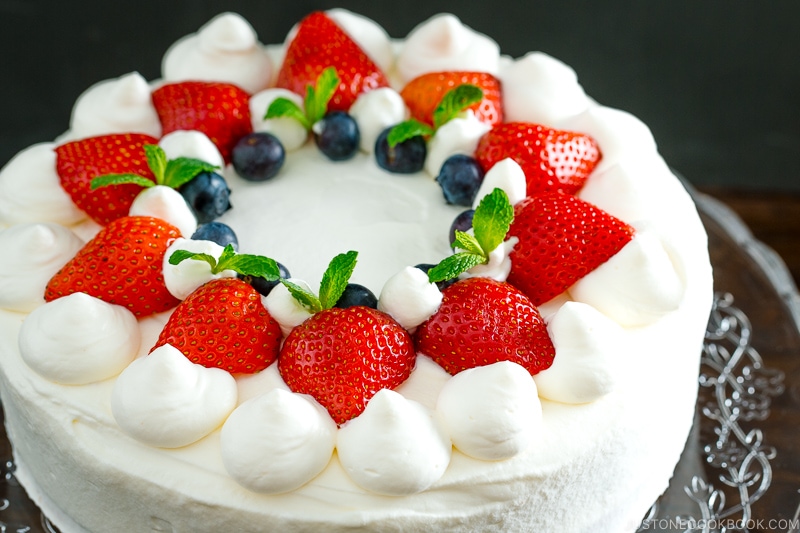
Nowadays, many people also like to buy cakes to celebrate Hinamatsuri. If you’re up for a baking project with your daughters, you can make this Japanese strawberry cake with homemade whipped cream. Nothing is more satisfying than a simple homemade cake. They would proudly bring this to school and share the celebration and culture with their friends.
15. Amazake
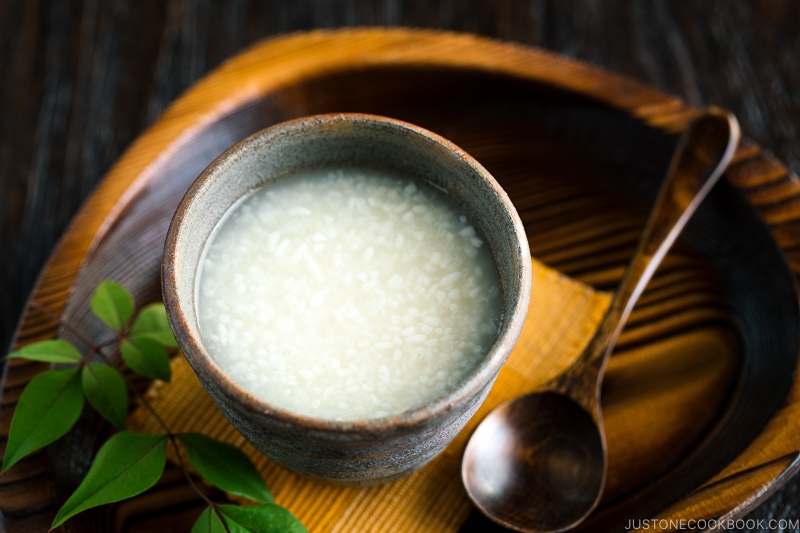
Creamy with a natural mild sweetness, Amazake is a popular Japanese hot drink during Hina Matsuri, serving as a non-alcoholic option to shirozake (白酒), a sweet white sake traditionally served on this day.
16. Hina Arare (Sweet Rice Crispy) & Hina Ame (Candy)
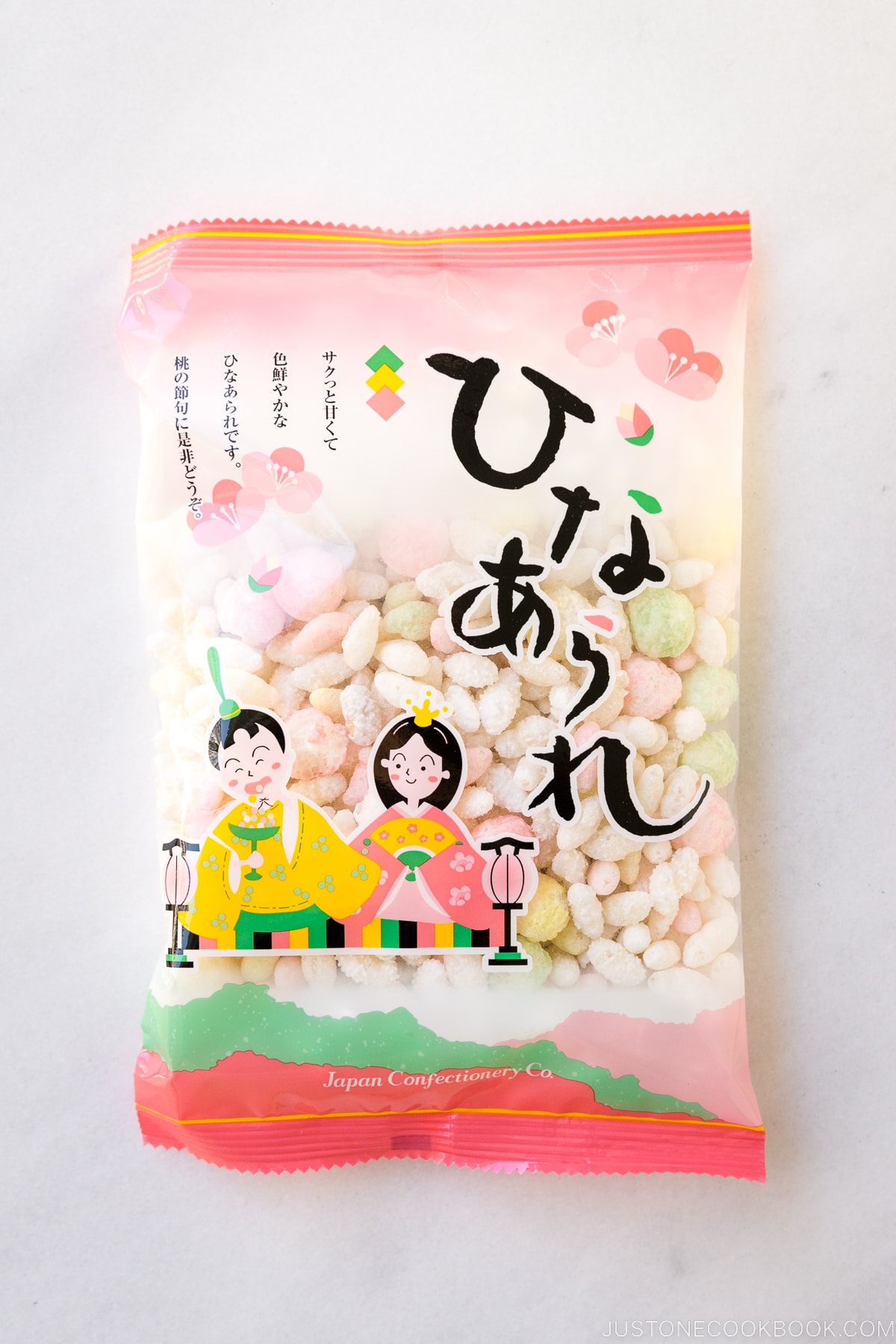
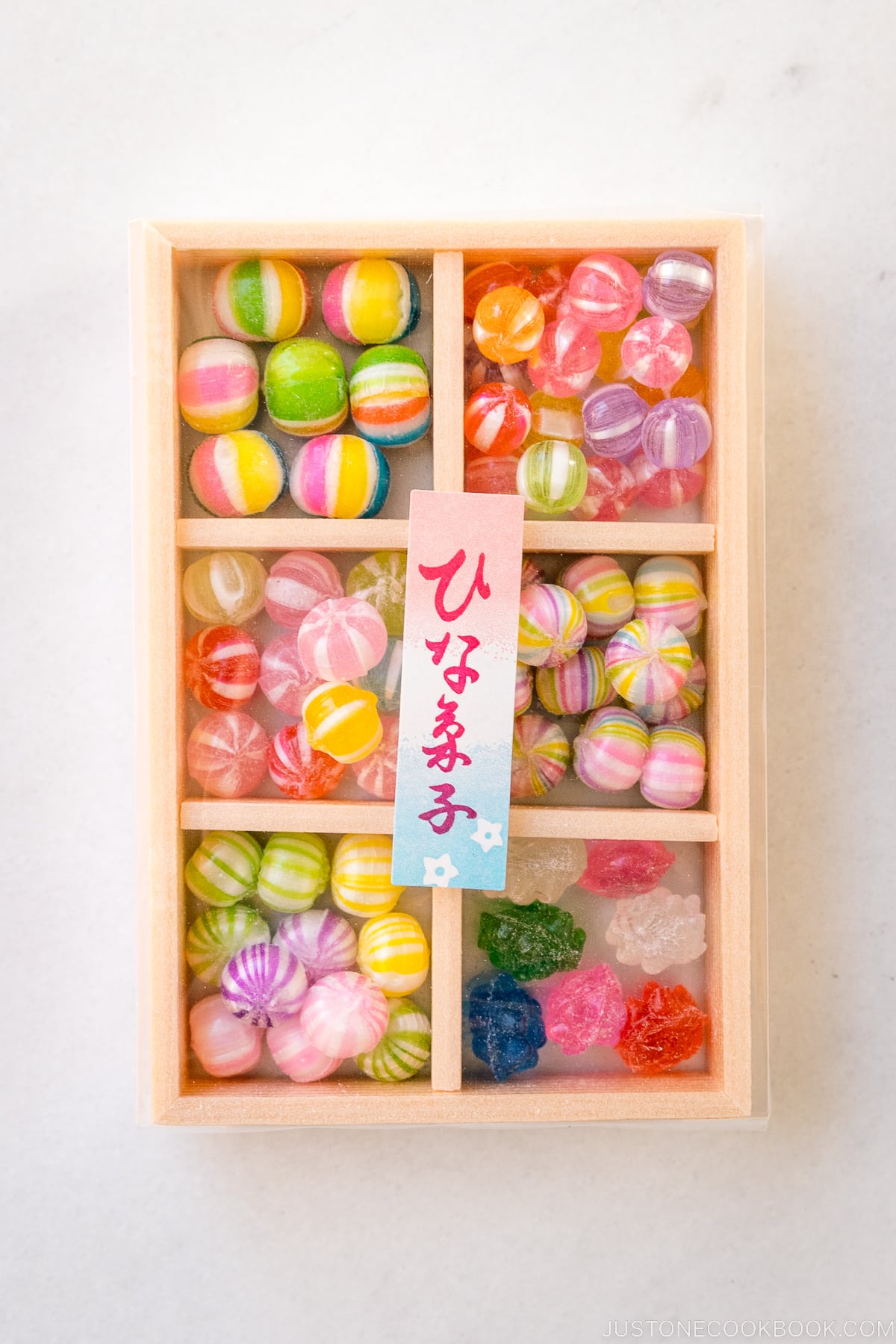
On Hinamatsuri, kids enjoy eating these rice crispy snacks (hina arare.) and candies (hina ame). The rice crackers are coated with sugar, but they’re not too sweet and have a nice crisp texture.
You can purchase these colorful treats in Japanese grocery stores starting around February.
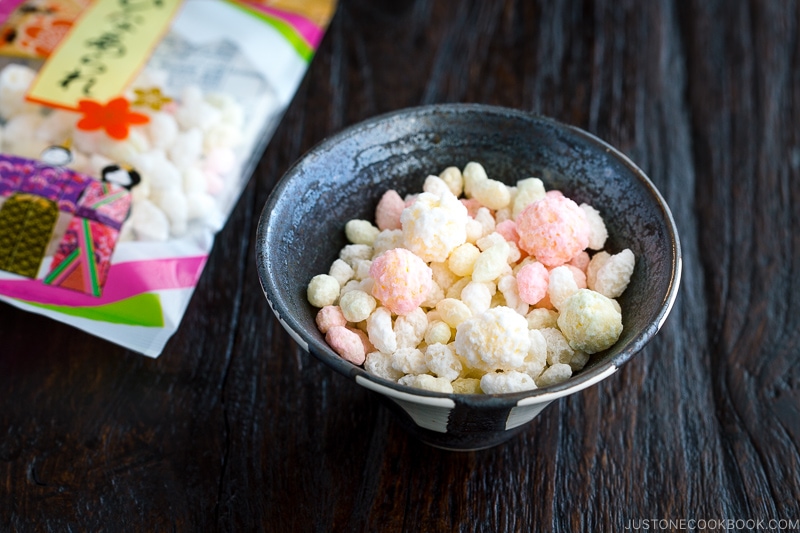
A Special Day for Girls
It is a special day when we come together as a family and community to celebrate our love for girls. I hope you enjoy these Hinamatsuri or Girls’ Day recipe menus we’ve put together. Happy Hinamatsuri!
Hinamatsuri – A Popular Manga Series
If you’re a big anime fan, you’ve probably heard of this popular Japanese manga series, also named Hinamatsuri, which has been adapted into an anime television series.
The story follows a young yakuza member, Yoshifumi Nitta, who ends up taking care of a mysterious girl with telekinetic powers named Hina, who suddenly appears in his apartment. It is a rather unexpected yet fun and well-constructed comedy.
You can watch the anime here. Get ready to laugh your heart out!
More Japanese Customs and Traditions
- 12 Japanese Cultural Activities and Games to do with Kids
- 15 Japanese Desserts to Celebrate the Seasons
- {Japanese Children’s Book} Issun Boshi: The One-Inch Boy
- Children’s Day (Boys’ Day) & 10 Recipes to Celebrate
Wish to learn more about Japanese cooking? Sign up for our free newsletter to receive cooking tips & recipe updates! And stay in touch with me on Facebook, Pinterest, YouTube, and Instagram.
Editor’s Note: This post was originally published on Mar 1, 2013. It’s was republished with new content on February 25, 2024.
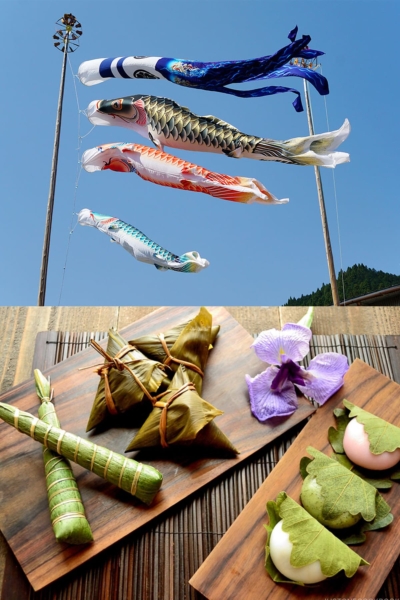
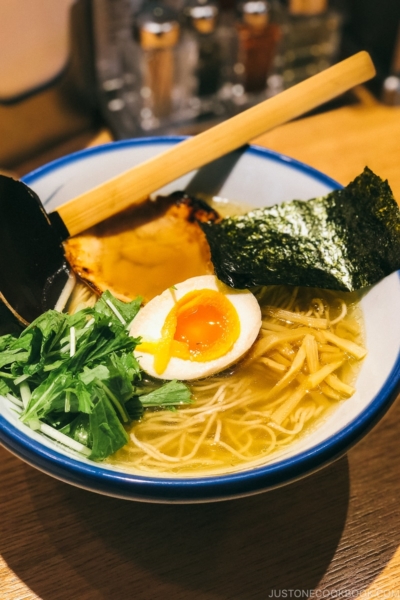
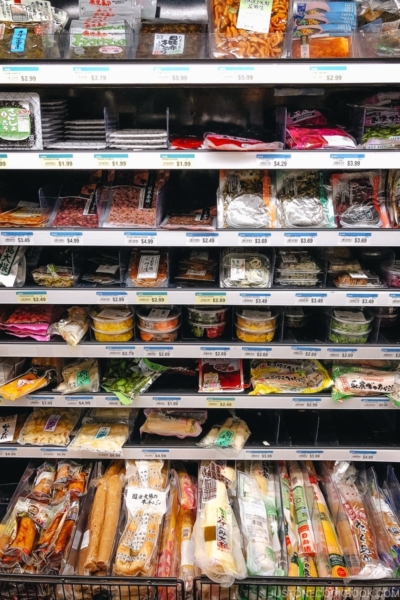
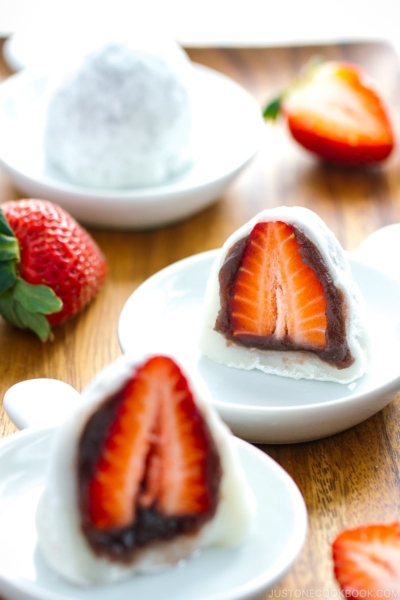




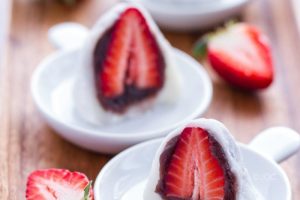
Thank you for your hinamatsuri post. Flash back to my mother..and her elegant dolls (unfortunately lost in a fire). Appreciate the history and all the special menus tied to this holiday. Not aware of the significance as she never expressed that aspect. Those pleasant memories still are with me today, and expecially via your post.
Hi Hannah, We are very sorry to hear that your mother’s elegant Hinamaturi doll was lost in a fire.😔
We were relieved that through Namiko’s post, you still have memories of the Hinamatsuri today that you enjoyed with your mother.
Thank you for reading this post and sharing your story with us.
Thank you Nami for your many postings. I especially enjoy your many side posts on your travels. I have 2 main questions/suggestions – Is it possible (or do you already have that site set up somewhere?) for you to set up an INDEX FILE so I can go right back to the post I wanted to follow up on ? Often I remember seeing a specific recipe/place but forgot which posting by the time I need that recipe.
Thanks again,
May
Hi May! If it’s recipe related, maybe Recipe Index may help? From the navigation bar, click Recipe Index: https://www.justonecookbook.com/recipes/
If it’s travel-related, you can click “Travel” and see the latest post under “What’s New in Travel”. It’s posted by chronological order. Hope that helps! 🙂
Hi Nami
I’m Tina again.I’m thinking of cooking your miso salmon soon.When i read your recipe u said to marinade 3omins-1 hr maximum.But when i read your recipe for miso cod, u marinated it min overnight.Why is there such a great difference in d marinating time for the 2 fish ?Both of them are also oily fish.
Hi Tina! Traditionally, Misozuke 味噌漬け is a way to preserve the fish for a long time, which is why you marinate the fish with miso for a long time. However, this recipe is just for marinating and cooking. 🙂
I forgot about hinamatsuri! (Like every year) Ah, but this reminded me……I’ll go set up our dolls now! (´∇ノ`*)ノ
Hi Sasha! Hope you had a wonderful Hinamatsuri! 🙂
Hello I am Italiana and I love the recipes you have put together I eat japanese foods as the diet is refreshing and very healthy my dream is to go to japan to live Thank you yes I now about the dolls so sweet Arigato! Sayonara .
Hi Elisa! Thank you so much for following my blog! I hope you can visit Japan one day. Thank you very much for writing! 🙂
Hi Nami! I really love the recipes you post. I’m half Japanese and half Chinese and I love to experiment making Japanese food and trying out variations of my favorite dishes. I work at a Japanese supermarket in Berkeley called Tokyo Fish Market and we just started carrying Sakura leaves. So if you’re ever in the east bay you should stop by 🙂
Hi Akemi-san! You are like my daughter – half Chinese and half Japanese. 🙂 I’ve never had a chance to visit Tokyo Fish Market before but I should check it out! Thank you for letting me know about sakura leaves! So during end of March they start carrying.. I need to remember. Maybe I was looking for it too early. Thank you so much for writing!
By the way, Tokyo Fish Market is one of the few stores who carry my favorite rice from Far West Rice “Komachi”. The rice is only sold on some stores in the Bay Area, so I’m happy that Tokyo Fish Market is one of them! 🙂
Was picking up sakura mochi at Shuei-Do in San Jose J-town and noticed that the Nijiya across the street had the cherry and oak leaves. Maybe the Nijiya near you also has it too? Would be fun to try your recipe for this holiday favorite!
Hi Linda! You saw Nijiya selling cherry and oak leaves?? Really!!! I am going to check! I go to Nijiya all the time and how did I miss this opportunity… Thank you so much for letting me know! 🙂
Thank you Nami, for sharing these recipes. They are so beautiful to look at! I have made barasushi and strawberry mochi before, but your recipes and photos help refine my technique so it will look much prettier! I appreciate you sharing your older posts since I am new to your blog…
Thank you so much for the kind words Julia! I’m not the most detailed person so I probably hide the flaw well or my camera does a good job. 😉 I made 3 separate attempts to take good looking strawberry daifuku pictures too. Thanks again!